
What is SEO? How it Works – SEO Guide for Beginners
One of the general questions we get from the business owners and other people who are starting their business online is – What is SEO and how it Works?
From the guidance of our well-experienced SEO experts, we provide the answer to the million-dollar question about SEO and its working ethics.
We’ll also cover the types of SEO along with other ideas about it so that you can better understand how it brings the changes in your business and what you need to do to shape a good future.
Let’s dig deeper. Here, I’ll explain what it means and how to approach it best!
What is SEO?
SEO stands for search engine optimization, which is one of the key strategies in the digital marketing process that focuses on improving your website’s presence in unpaid search results on search engines like Google, Bing, Yahoo, Yandex. The traffic from the unpaid results is called Organic traffic.
The process of SEO is an Art and it also involves patience. You must create the right structure to be at the top in your SEO journey.
If you are involved in online business, you must be at the top in the search engine result positions to get more traffic; it should be part of your marketing efforts.
The top result gives you a lifetime bonus. But, you must keep working on it to maintain the position.
Now we’re going to dig deep into SEO, but feel free to jump to any section that interests you:
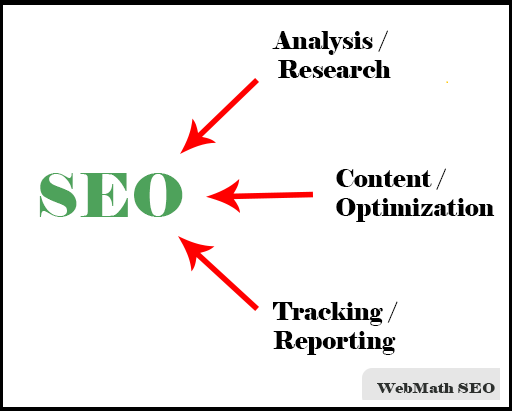
Overview
- How Search Engine Works
- White hat vs. black hat
- On-page SEO vs. Off-page SEO
- On-Page SEO Techniques
- Off-Page SEO Techniques
Now what does that trick look like, and why does it even matter?
As I mentioned earlier, almost 100% of the searchers having online experiences begin with searching their needs through a search engine, and approximately 75% of searchers start their searches on Google.
An interesting fact is that the first five results on Google get 67% of all clicks, and now you can get an idea of why SEO is so important.
Not only the hard work is involved to bring you on the top, but you must also be smart to hit the first page of search engines.
If your website or blog is trailing from the first page of SERP, it is equivalent to not ranking at all.
To know how to show up first, you must need to know how search engines work before going for the process.
How Search Engine Works?
I hope, now you have an idea of what is SEO. I’ll explain about how search engines work:
Every Search engine like Google, Bing (or any search engine you’re using) has a crawler that circulates everywhere on the internet and gathers information about all the content.
The crawlers bring all that information as 1s and 0s and get back to the search engine to build an index. That index is then fed through an algorithm that tries to match all that data with your search queries.
There are a lot of interesting elements that go into a search engine’s algorithm, and here’s how a group of experts ranked their importance:
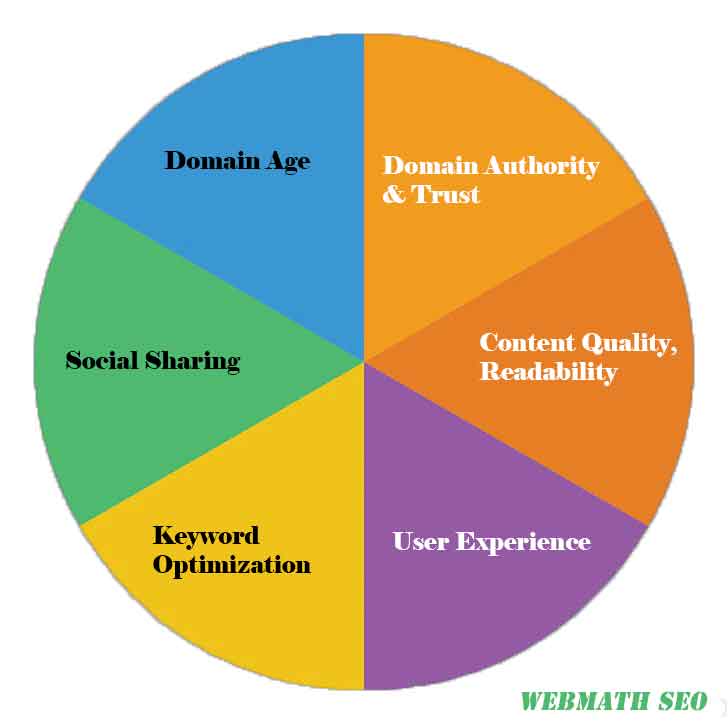
That’s all the search engine process of SEO.
The above process of SEO optimization is where the people who write all that content and publish it on their sites are something more attractive and those sites up so search engines will be able to understand what they’re seeing, and the users who arrive via search will like what they see.
While Google protects its search algorithm and not the entire over 200 determining factors are public, Backlink provides a big list of search engine ranking factors.
First, we need to explain more about SEO factors. There are two sides to SEO, you must choose the way of working after reading this.
Types of SEO – Black Hat SEO vs. White Hat SEO
As you know, some people are working very hard to run their household chores but few people are also getting a quick buck from the business to get a luxurious life in a short period.
It is similar to search engine optimization. Few people are in it to make a few grand really quickly while others are struggling for a long period.
If you want to get a quick result in SEO, you’ll probably choose the black hat SEO.
This type of SEO focuses on ranking your website only for the search engines, not considering the human readability. Since there are various ways to rank higher by breaching the rules and black hat SEO is among major choices to make a few thousand dollars fast.
Ultimately, this approach will not give you long term results. It is also regarded as a spammy job that combines crappy pages which often get banned very fast. Finally, Search engines will punish the websites and their dreams of online business permanently.
There is another way of SEO to be a strong competitor in the race for a while.
White hat SEO is the way to build a long term online business. If you do SEO on this way, you’ll focus on your users.
You’ll try to make them feel more comfortable, providing the best content possible and to make it easily accessible to them by updating the website according to the search engine’s rules.
The Major Difference between White Hat & Black Hat SEO.
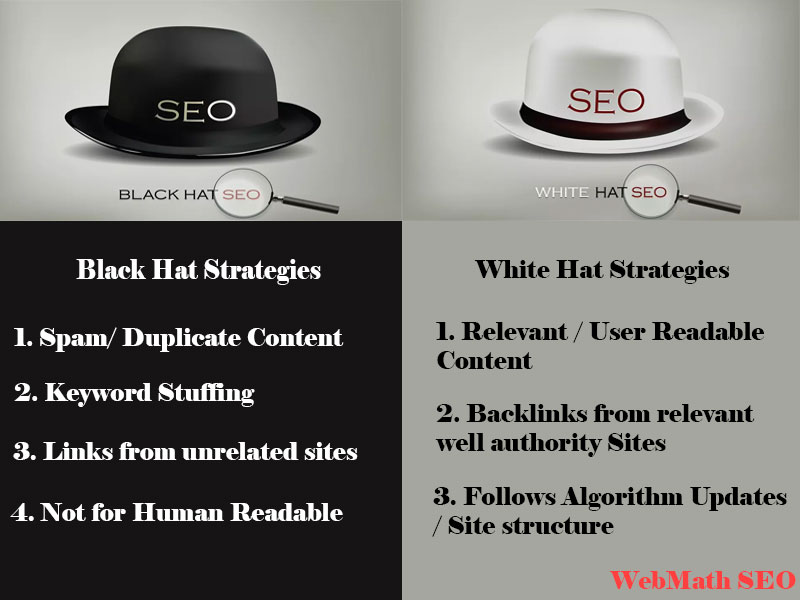
You must obey the rules of the White Hat method to stay stronger in the SEO industry.
If you follow the strategy and start seeing the result, you will get a good appreciation from your company as a digital marketer with the increasing possibility of getting higher positions.
As you know, the World is not always a combination of black or white people.
The same holds applicable to SEO. There’s actually something in the middle of the ‘white vs. black hat debate’ that I need to mention here.
Gray hat SEO, as per the name, it is the combination of white and a little black.
Search engine algorithms are not a standard one that intentionally guides you to follow this type of SEO.
We can’t decide on choosing the right SEO type until we try and get the result.
Upon A/B testing and your project scenario, that’s for you to decide.
Your competitors might perform various strategies to reach on the top positions that might push you down in the search engine ranking.
So you need to decide and choose the right path to accept the results whatever you get.
If you have any doubts about choosing the right type of SEO for your website, just drop your queries in the comment box. Our experts will reach you instantly.
Deep understanding of On-Page SEO vs Off-Page SEO
There are two wide categories of SEO: On-page SEO and Off-page SEO.
On-page SEO refers to the factors like Header Tags, Meta Tags, Content, internal linking, SSL as well as others that you can control on your own website.
Off-page SEO refers to other ranking factors apart from your website, like backlinks from another site, and exposure from other social media.
Both types are naturally different in their characteristics, but you need to use their appropriate proportion concurrently in order to do well with SEO.
We’ll go in-depth at on-page SEO first.
On-Page SEO
There are 3 major categories of on-page SEO that you’ll need to understand first. The primary one is the content.
Content Optimization
Content optimization is generally the process of enhancing the performance of a site’s pages that provides unique value to its users through on-page SEO, conversion optimization, user experience, design, content editing, and more.
You might have heard this topic before: “Content is king.”
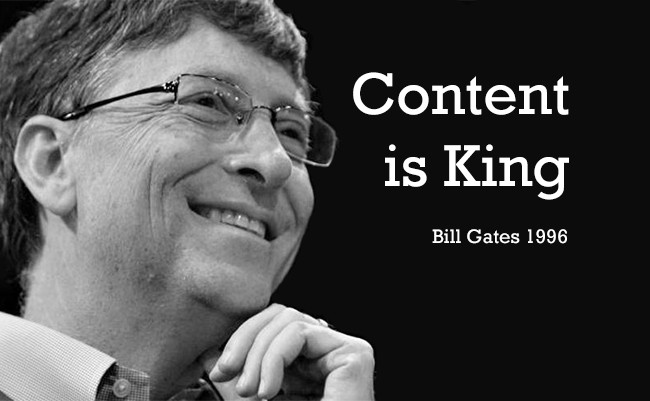
Bill Gates wrote on this topic in 1996, and it’s become true now.
Let me explain, why?
Because a person who is searching for something, he/she must be very happy when he/she finds the result for their needs at a short time.
How Search Engine Crawler Picks the Right Content for the exact queries?
There are many factors involved in picking up your content like the content you wrote, the quality of work, the relevancy of the content, and the keyword placements.
You must stand out from your competitors by providing the best content; it is still the initial dot point for any successful SEO results.
“Content that is 10 times better than the best result that can currently be found in the search results for a given keyword phrase or topic.” – Rand Fishkin
Once you start writing, make sure you add all the necessary ingredients of great content in your blog page.
You must always do a professional approach to produce great content for the users.
Keyword research
Keywords are the heart of SEO because it relates the users to what people are searching for and the content you are providing to fill that need.
Finding target keywords for the blog post is crucial one before you start writing great content.
You should use different keyword formats to target wide audiences and increase your chance of a customer base.
Types of Buyer Keywords
Before we go into the deep, do you know how many types of keywords there are?
1. Navigational – Users use these types of keywords types to find a specific website. (Ex: Directly search “Amazon”, “Microsoft”)
2. Informational – Users use these types of keywords to learn something. (Ex: “What is SEO”)
3. Transactional – Users use these types of keywords to buy something. (Ex: “Buy Tshirts online”)
Types of Keywords by Length
Another way to evaluate and choose keywords is by their length.
- Short-tail keywords
- Mid-tail keywords
- Long-tail keywords
Short-Tail Keywords
Short Tail Keywords, also called generic keywords, are popular, broad search terms that have a very high volume of search traffic. These terms are usually one or two words, and they are very competitive to rank for.
Example: buy t-shirts
Mid-tail keywords
Mid-tail keywords are a combination of short-tail keywords and long-tail keywords. These terms are usually two to three words long and are slightly more descriptive than generic keywords.
Example: best t-shirts online
Long-tail keywords
Long tail keywords are search phrases with longer word counts. These can be targeted in FAQs and Resource articles.
AnswerThePublic is one of the best tools to find long tail keywords.
Example: What is meant by SEO
Types of On-Site Keywords
On-site content keywords refer to the types of keywords in SEO that are used to create content for a new blog post or landing page. These types of keywords are:
Primary keywords – It is the main term you target on a webpage.
LSI keywords – LSI keywords (latent semantic keywords) are terms or phrases that are semantically related to, or variations, or synonyms of, a primary keyword.
Find the Right Types of Keywords for Your SEO
Finding the right type of keyword helps you to create a more informed and strategic marketing plan for increasing the traffic of your website and to boost conversions.
Optimizing the keywords on the Website
Once you’ve created your best content and found the targeting keywords, the next task is to optimize the keywords on your website.
Let’s take a look at the four important parts you should optimize the keywords on the below places.
- URL
- Title tags
- Meta Description
- Header Tags
- Alt Tags
Let’s go in deep, about each part:
Title tags
A title tag is an HTML element that defines the title of a web page. Title tags are displayed on search engine results pages as the clickable element for a given result and are important for usability, SEO, and social sharing.
This is the #1 Ranking Factor in SEO.
HTML Format:
<head><title>Example Title</title></head>
Optimal format:
Primary Keyword – Secondary Keyword | Brand Name
Technology Updates – SEO World | Real Guest Bloggers
Optimal title length:
Google generally displays the first 50–60 characters of a title tag.
If you keep your keywords between at starting, your ranking probability will increase compared with having the keywords at last or mid in the title.
Even if you write the title tags for SEO, remember that your main focus is to increase the CTR (which means a well-attractive title will possibly get more Clicks).
Meta Description
The Meta description is a snippet of between 155 – 160 characters – a tag in HTML – which summarizes a page’s content.
HTML Format:
<meta name=”description” content=”What is the SEO”/>
Search engines display the Meta description in search results mostly when the search queries are optimized within the description. A meta description is a crucial factor in ranking.
Header Tags
HTML header tags are used to categorize the heading (h1) and subheadings (h2-h6) of a page from the rest of the content.
Apart from SEO, the header tags should be user-friendly.
For SEO, there are 2 major purposes for HTML header tags:
Structuring the page for readability
Relevance to keywords
You must prioritize the tags on your webpage, the primary heading tag is the h1 tag, and the least important is the h6 tag.
In the HTML version, the heading tags from h1 to h6 form a top-down hierarchy.
There are more conversations about having more than one h1s in a page; ideally, every page should have one h1 tag if you are using HTML 4 and previous versions. If you are using HTML5, you can use more than one in a page.
Alt Tags / Image Name
Alt Tags abbreviated as “alt attribute” and “alt description,”
You can also rank your image, you must use the targeted keywords and user-identified names for the alt tags and name for images. Based on it, Search engines consider these factors for ranking.
Alt Tag Format:
<img src=”myimage.png” alt=”Real_Guest_Bloggers” />.
Best practices for optimizing images:
- Images should be optimized for increasing the site speed.
- Alt Text should be more crisp and clear.
URL Structure
While optimizing the keywords on the URL, it also provides prominence to the authority of the overall domain itself, and acts as a ranking factor.
But when you are trying to create a URL, you must follow the Silo SEO.
A silo structure is a type of site architecture that I find to be very logically structured which helps users for navigation.
Other On-Page Major SEO Factors to be Considered
Internal Linking
It helps to connect your web pages and gives an idea to the search engines about the structure of your website.
Benefits of having Internal Linking:
- It passes authority from one page to another
- It guides visitors to high-value, high-converting pages
- It increases the conversion rate by having qualified CTAs
Robots.txt
It must be one of the important SEO factors for the website. A robots.txt file lets the search engine crawlers know about the pages or files that they can or can’t access from your site. We can control it.
Sitemap.xml
An XML file that has the list of URLs in a site. Search engines like Google, Bing read this file to more frequently crawl your site.
Tracking / Webmaster Codes
A tracking code is a small snippet of code that is generally described as JavaScript code. These lines of code allow advertisers, webmasters, and marketers to analyze the flow of visitors to websites and the activities of users.
There are various tools like Google Analytics, Hotjar, Google webmaster tools, and others that digital marketers must use to track the SEO results. Based on it, SEO experts should optimize the pages.
Schema Markup
Schema markup found at schema.org, that place on your website to help the search engines return more informative results for users. If you add the schema on your websites, it helps improve the way search engines read and represent your page in SERPs.
There are various types of schema markup available:
- Breadcrumb
- Article
- Events
- FAQ Page
- How-to
- Videos
- Local Business
- ProductPerson
- Website Sitelinks
Mobile Friendliness
Almost every person in the entire world has Smartphones. Hence optimizing your website for the mobile is really essential in the aspects of SEO. Search engine spiders provide you with much additional value for ranking.
An interesting fact, In fact, 58% of all searches in Google are from mobile devices.
According to Google, there are 27.8 billion more queries performed on mobile than desktop.
Google launched Accelerated Mobile Pages, and it is now a grooming technology for websites that helps increasing the website speed and it loads quickly on mobile devices. In fact, AMP pages load about 4x faster than their non-AMP pages.
As a marketer, you must adapt to the new technologies to be at the top.
You can test your web pages for mobile-friendliness – Google’s mobile-friendly testing tool.
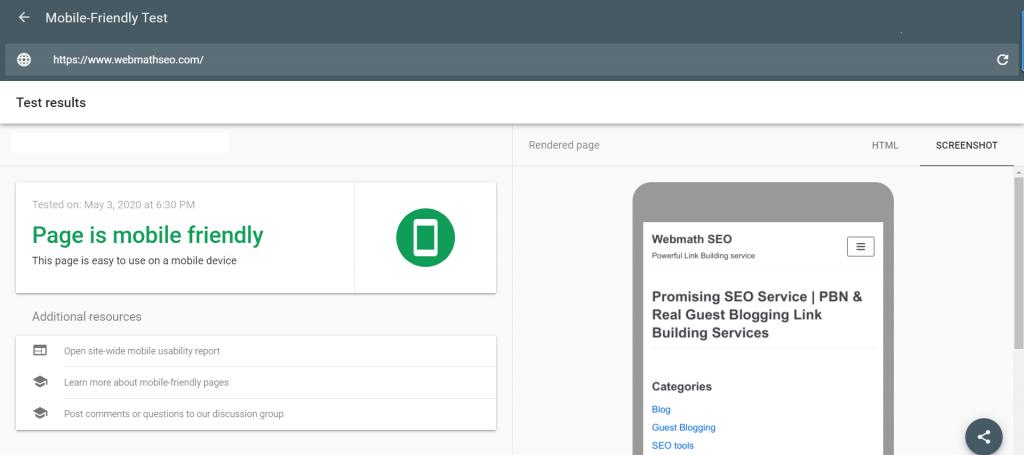
Page speed
Is a 100/100 page speed Score required for your business?
I say yes. The quick answer is, the page speed affects the SEO. Your website must load between 2-3 seconds during the visitor’s arrival at your website. Otherwise, your competitors will grasp your visitors in a matter of seconds.
Also, by the way, speed can also affect rankings indirectly, by increasing the bounce rate and reducing dwell time.
To check the speed of your web pages, use Google’s Pagespeed Insights tool.
SSL
For instance, Google claims that websites that use HTTPS will have a small ranking advantage because of ensuring security.
Canonical Tag
A canonical tag is a way to inform search engines that a specific URL represents the original copy of a page. Using the canonical tag prevents duplicate content issues.
Off-Page SEO
Alright, it is the best time to step out from the house and take a look at the front portion.
I’ll now provide you the information of four major areas of off-page SEO.
Off-page SEO represents what you can do outside of your website to help you improve SERP: link building, forums, influencer outreach, and content marketing, to name a few.
While search algorithms and ranking factors are constantly changing, the general concern is that
- Relevancy,
- Trustworthiness, and
- Authority.
Building Backlinks
Building backlinks is at the heart of off-page SEO. Search engines use backlinks as representations of the linked-to content’s quality, so a site with many high-quality backlinks will usually rank better than an otherwise equal site with fewer backlinks or spammy links.
There are three main types of links, defined by how they were earned:
- Natural links
- Manually built links
- Self-created links
Off-Page SEO Activities
In our experience, these 11 off-page SEO activities are the easiest to include and offer the best returns:
- Guest Blogging
- Forum Participating
- Brand Mentions
- Blog Commenting
- Influencer Outreach
- Broken Link Building
- Social Networking
- Social Bookmarking
- Content Marketing
- Questions & Answers
- Newsletters
Anchor Text
Anchor text is the clickable text in a hyperlink. SEO best practices dictate that the anchor text should be relevant to the page you’re linking to, rather than generic text.
Types of anchor text
- Exact-match (Ex: my target keyword is “Guest Blogging”, I use the anchor text as “Guest Blogging”)
- Partial-match (Ex: my target keyword is “Guest Blogging”, I use the anchor text as “Free Guest Blogging Service for SEO”)
- Branded (Ex: I use the anchor text as Real Guest Bloggers)
- Naked link (Ex: I use the anchor text as “www.realguestbloggers.com”)
- Generic (Ex: Click here, visit now)
- Images
Finally, SEO and social media
Even though social media signals like Facebook, Twitter, Linkedin, and Instagram don’t impact the search rankings directly, they affect your search engine optimization efforts in primarily four ways:
Youtube is most likely considered one of the greatest search engines.
Get More Quality Links
- Increase the Number of Branded Searches on search engines
- Increased online visibility and
- Traffic to your website
Let me explain Social Media in the upcoming blog posts.
How to Track & Report SEO Results?
So once you start writing the proper content and putting all the efforts towards ranking in Search engines, then finally how do you track the results after your efforts?
Most of digital marketers doing their job well, but they are lagging in reporting and result-tracking activities. Let me provide, some key factors to consider as you measure your site’s SEO performance.
Keyword Rankings
There are more tools available in the market for checking your keyword rankings for your target country.
After the months of your SEO efforts, you must compare the targeting keywords in previous positions with new positions. Then you can get to know about your SEO efforts. Hopefully, it will give better results, otherwise, you must change your plan. Anyway, before doing any SEO efforts, consult your plan with the SEO experts who is very much experienced in getting the positive results.
You can check with the Semrush to get a detailed report. Semrush provides you the newly discovered keywords and backlinks details, and traffic details.
Organic Traffic
Organic traffic is the most required one for any of the websites. By looking at the organic traffic to your site in google analytics, you can get a detailed analysis of your visitors
- Which Search engine
- Total sessions
- Bounce Rate
- How much time they spend
- Visitors flow.
You can measure your organic traffic easily with google analytics – since it’s free and the most-used by any digital marketers. Let me explain about Google Analytics in detailed in upcoming blogposts.
You can also check your keywords on Webmasters:
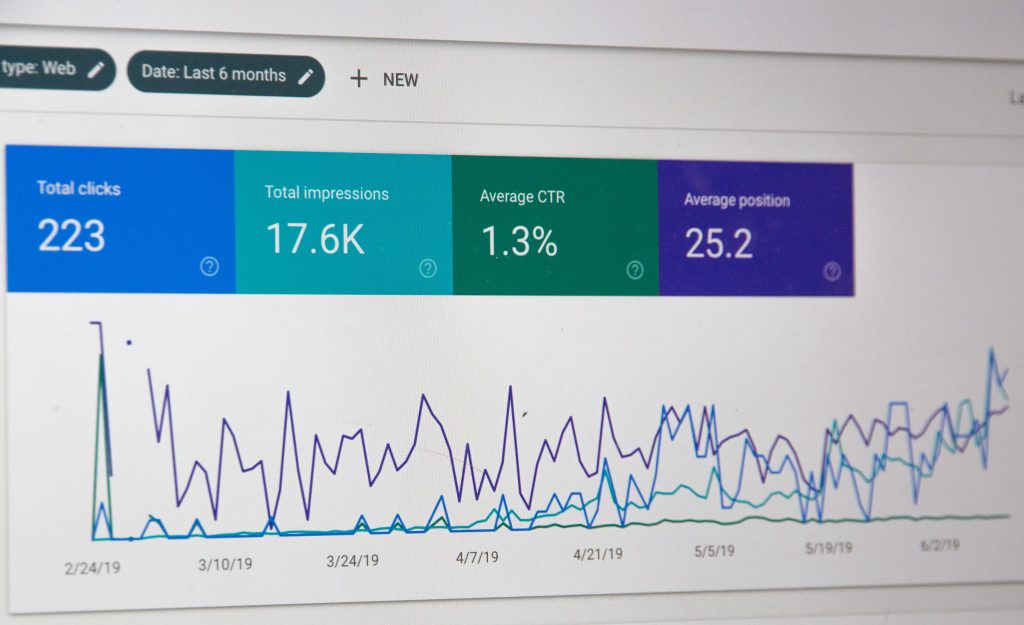
Organic Leads & Sales
Naturally, the way of measuring your search engine optimization results should be actual leads, sales, revenue, and profit.
Like with any SEO activity you need to answer: how does the activity help for your revenue?
The quick answer is to set up goals in a free tool like Google Analytics. You can track the various interaction like Signup, Purchase, progress, within your application through Google Analytics.
Before ending with this topic, how SEO efforts are required for your business, reporting, and tracking your SEO efforts are also key factors to improve your growth.
Conclusion
I hope this instruction helped you realize that SEO is an essential one for every online business.
If you take a lot of effort to get a few basics right, you will be successful in your industry.
Get started with your SEO tasks today as it can take you more time to see results.
Do things in the combination of on-page and off-page with the right guidance, and start seeing your growth periodically. Then you don’t avoid this.
After reading this guide, how will you change your attitude toward SEO?
Just take an overview again
| What is SEO? SEO, abbreviated as search engine optimization. It is the mathematical art of improving your ranking higher on a search engine in the unpaid section, also known as the organic listings. |
| How long does it take for SEO to work? Depending on your competition, it might differ. If you choose in the right way, you might be able to see between 6 – 12 months. |
| Do the Search engines penalize my website for duplicate content? Yes, Search engines penalize your websites if you use the duplicate content. |
| What factors in link building matter? Search engines look at the relevancy, & trust of the site linking to you, the authority of the linking site, total link, and the anchor text of each link. |
| What is the difference between on-page and off-page SEO? On-page SEO represents updates on your own website. Off-page SEO takes place off from your website, like backlinks from another site. |
Read More: Top 10 Free SEO Tools To Rank #1 in Google